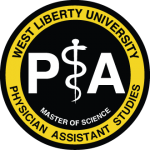TECHNICAL STANDARDS
Candidates are reviewed for admission into the program on an individual basis. In addition to meeting the academic, professional, and administrative requirements, candidates must also have the ability to develop the intellectual capacity and technical skills required to perform the functions of a practicing physician assistant. Candidates who are accepted as students in the physician assistant program must meet the following standards:
Observation
The student must have sufficient vision to be able to observe demonstrations, experiments, laboratory exercises, visual presentations and computer-facilitated instruction. He or she must be able to differentiate between normal and pathological states and distinguish between colors. In addition, the student must be able to observe patients closely and at a distance. Observation necessitates the complimentary use of smell, touch and hearing.
Communication
The student must be able to speak, hear, read and write in order to elicit and exchange information with patients, family members, and other health care providers. He or she must be able to perceive verbal and non-verbal cues as it pertains to patients’ conditions. In addition, the student must be able to facilitate the flow of information with respect and sensitivity towards faculty, patients, families, and other members of the health care team.
Motor
The student must have the motor control and coordination to perform physical examinations through inspection, palpation, auscultation and percussion in order to elicit information. He or she must be able to perform laboratory procedures, clinical skills and diagnostic maneuvers, with and without the use of equipment. In addition, the student must be able to bend, manipulate, lightly lift to approximately twenty-five pounds, and assist patients.
Intellectual, Conceptual, Integrative, and Quantitative
The student must have the ability to comprehend, memorize, interpret, analyze and synthesize information presented in the classroom, laboratory and clinical settings. He or she must also be able to measure, calculate, formulate, reason and make diagnostic and therapeutic decisions. The student must be able to assimilate and integrate information though a variety of modalities such as classroom instruction, group interaction, research, individual study, and presentations. In addition, the student must be able to integrate the use of computer programs and web-based resources into learning.
Behavioral and Social Attributes
The student must have the emotional health for full utilization of his or her intellectual capabilities, to exercise good judgment, to promptly complete all responsibilities and assignments attendant to the diagnosis and care of patients, and the deportment to exercise sensitive, empathic, mature and effective relationships with patients, their families, peers and other members of the health care team. The student should be able to recognize limitations of his or her education and training. The student should also be willing to seek consultation when appropriate, and be able to recognize, handle and/or assist in life-threatening situations. He or she must also have the humility to accept constructive critique and the perseverance to complete an arduous course of study.
All students are expected to perform physical examinations on both males and females and on each other. Breast and pelvic examinations will be conducted on anatomic models and/or simulated patients during the didactic (1st) year, and on real patients during the clinical year. Candidates who are unable to meet this requirement based on religious beliefs or other reason must inform the program upon acceptance so that reasonable arrangements may be made.
Reasonable accommodations will be made for applicants with handicaps; however, as part of the admission process, all applicants must be able to perform all listed technical requirements.
